When something really major happens in your life there is always a before and after. And when that something is a massive transformation that alters your body and identity, when that something is a stroke that suddenly changes you from an able-bodied person to someone who will spend the rest of her life managing the effects of brain injury, the line between ‘before’ and ‘after’ can often feel very stark. Over the years, I’ve found several ways to smudge and trouble the hard contours of that before and after line but occasionally, the ‘before’ can come up upon me in quite an unexpected way, prompting melancholy reflections on the loss of my able-bodied self.
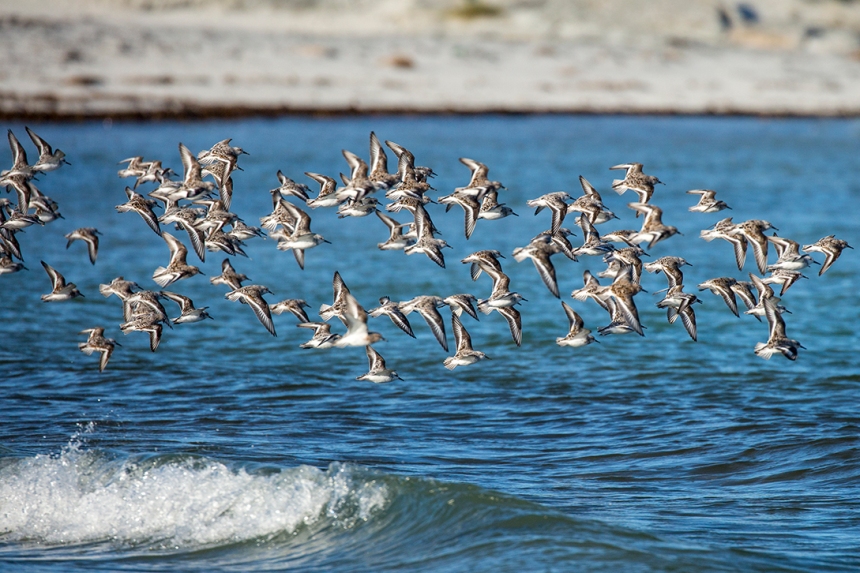
Over time, I’ve come to understand my relationship to the body I was before as being very like bereavement: like that kind of grief, the sadness about one’s lost physical self doesn’t really go away, though you do find ways to deal with it, riding it out and accepting it when it comes. I would say that in my case that developing and understanding a new identity as a disabled person has been a really positive (and positively important) process. Yet despite this , encountering the ‘before’ can still occasionally be a weird or difficult experience. For me this can be particularly so when visiting the landscapes that I previously enjoyed as a physically active able-bodied person.
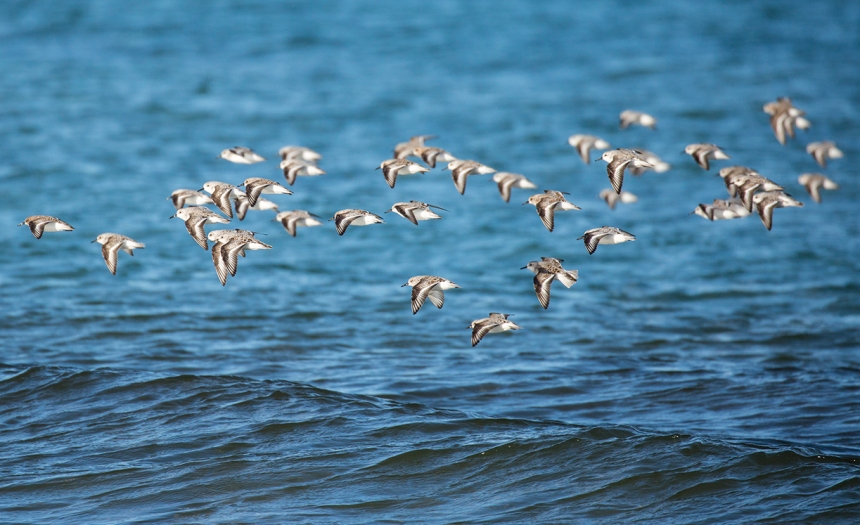
So I confess I was a little worried when we decided to take a wee break in some beautiful Hebridean islands I’d not visited since a few months ‘before’ my stroke. When I saw these lovely places again, wouldn’t I simply be reminded of how very different things were when I saw them last? Was I just going to spend the whole time being bothered by the body I once was, the body that stomped blithely about the Clisham Ridge ?
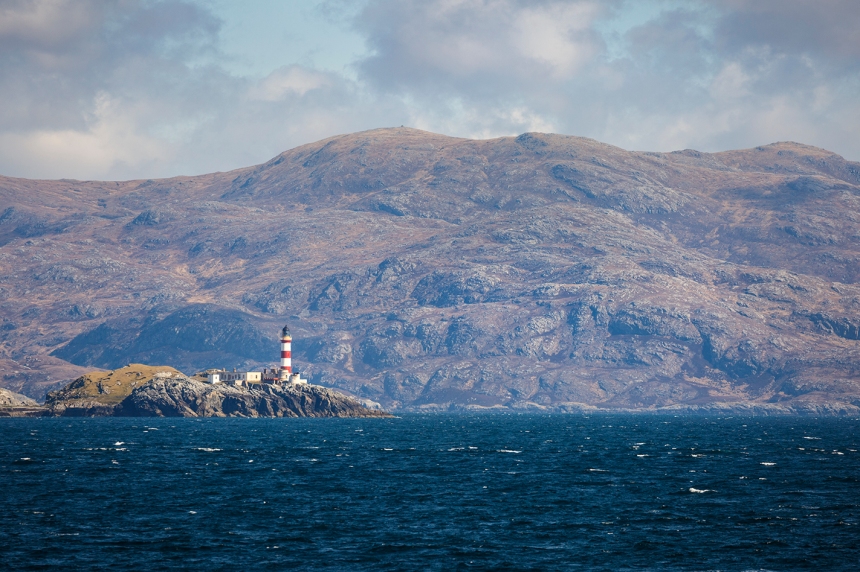
Of course, when I saw the hills, I thought of what it was like to be up there, back then.
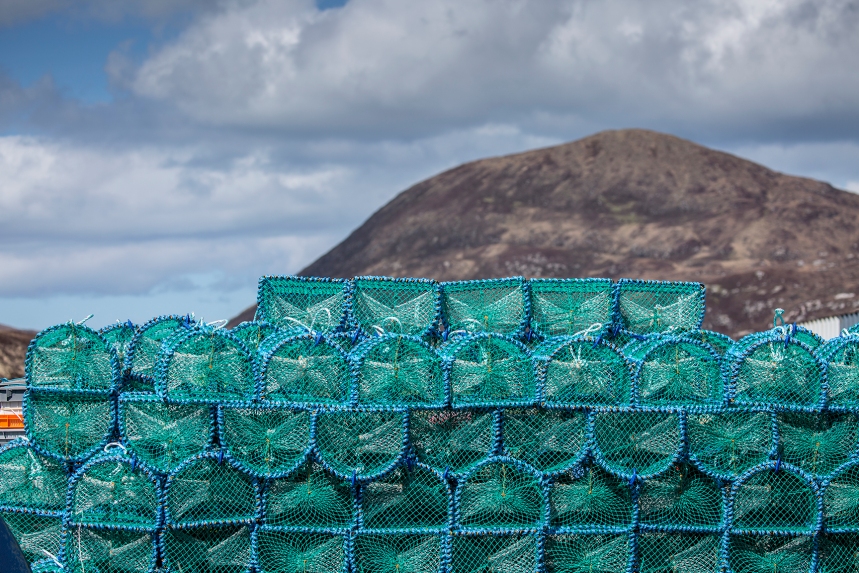
But I also found that the sheer force of the NOW of these places came upon me so very strongly that there was little space for thinking about how things were ‘before.’
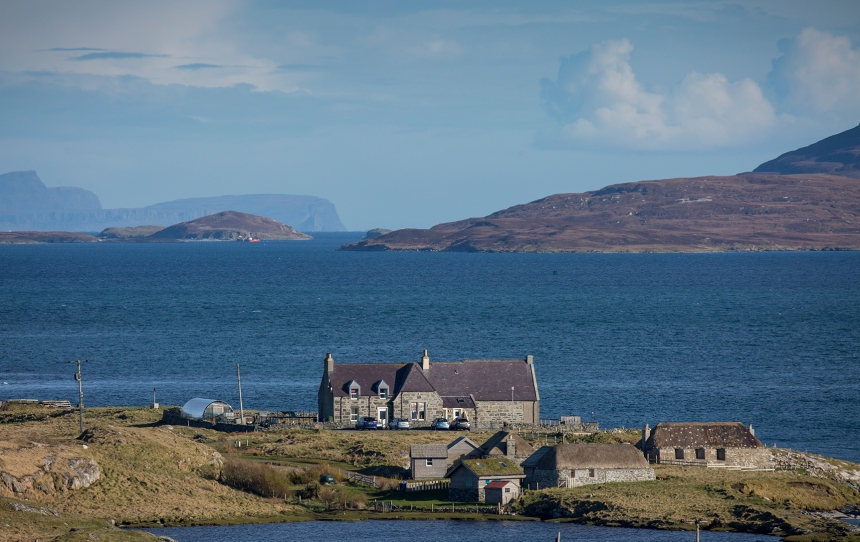
These landscapes are so distinctive, so very special. Why hadn’t I been back sooner?

I am not the energetic walking body I once was. But I just walk differently now, paying continual attention to my body’s needs and behaviour, gauging my strength and energy, adapting to the environment.

This forced work of adaptation (an activity familiar to all disabled walkers) means I have to develop a much closer connection to my immediate environment: I have to strive to understand the relationship of my body to the spaces and substances that surround it.
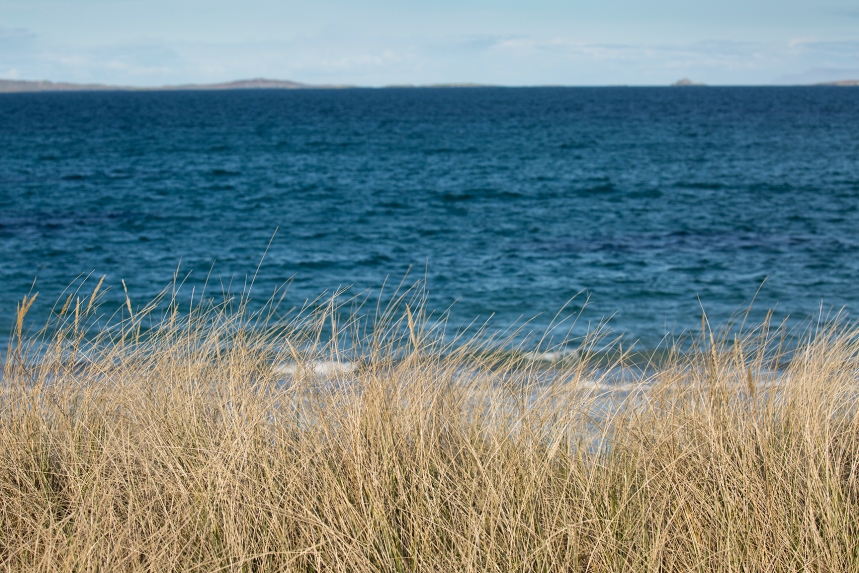
Forced attentiveness comes with its own rewards.
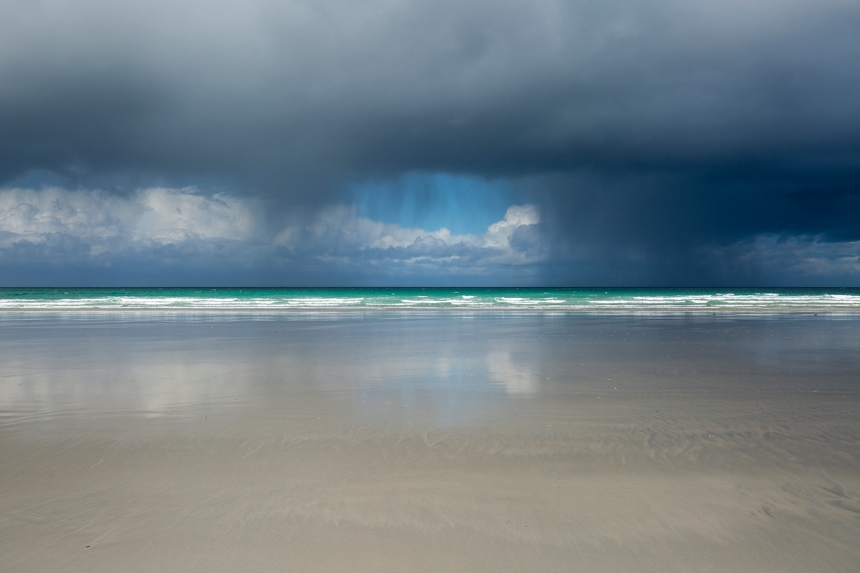
So as the different body I now am, it was fantastic to be back here again, to see this light and feel this air again.
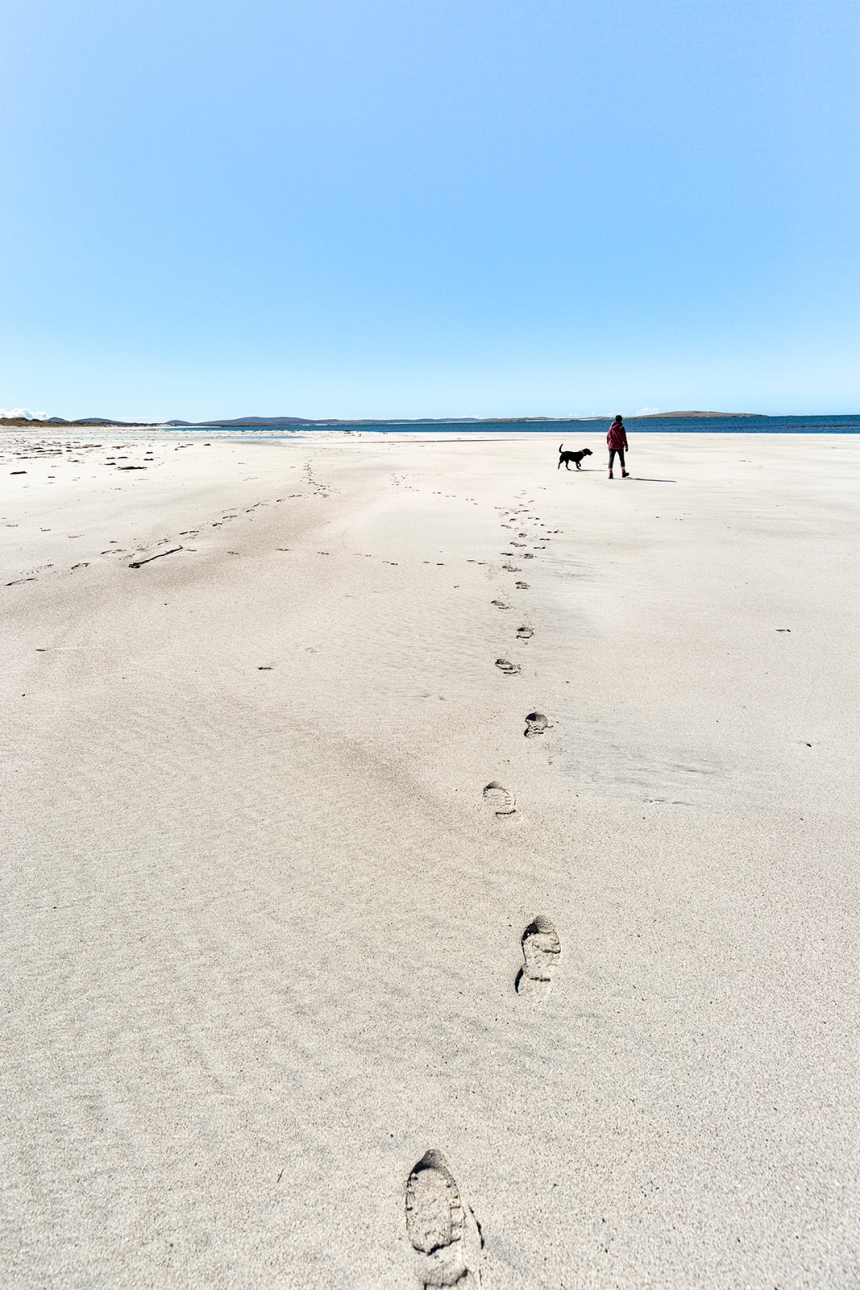
I walked and knitted. I listened to larks and lapwings on the machair, turned my face into the wind, picked the tide-smoothed shells of sea urchins from the sand. Tom took many photographs. I met creative and enterprising people that I wished I’d met before. I felt enlivened and inspired.
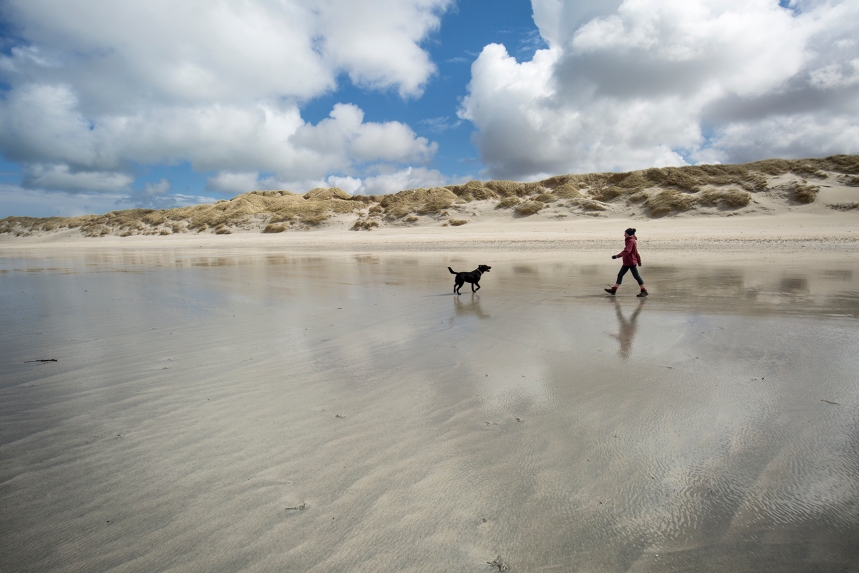
On our last evening I ran into Deirdre Nelson, the brilliant artist-maker whose work I’ve written about a few times, and who I’d not seen since before my stroke. I first saw Deirdre’s a fighe a cheo / knitting fog exhibition ten years ago in the very spaces at Taigh Chearsabhagh, where I now found her again.
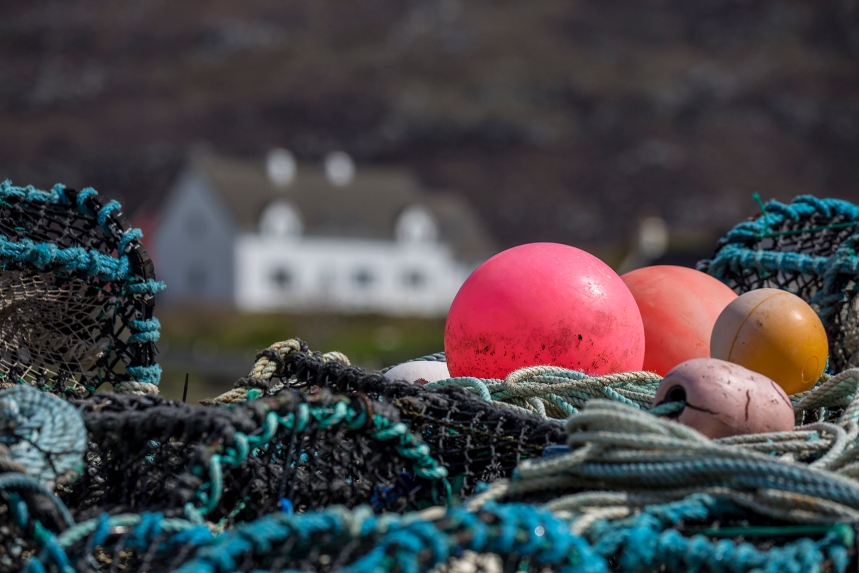
The last time I saw Deirdre, I was an eighteenth-century academic specialist with a sideline interest in textile art and knitting.
“So much has happened,” Deirdre said, giving me a hug. “Look where you are now.”

“I know,” I said, “here I am. Back here.”
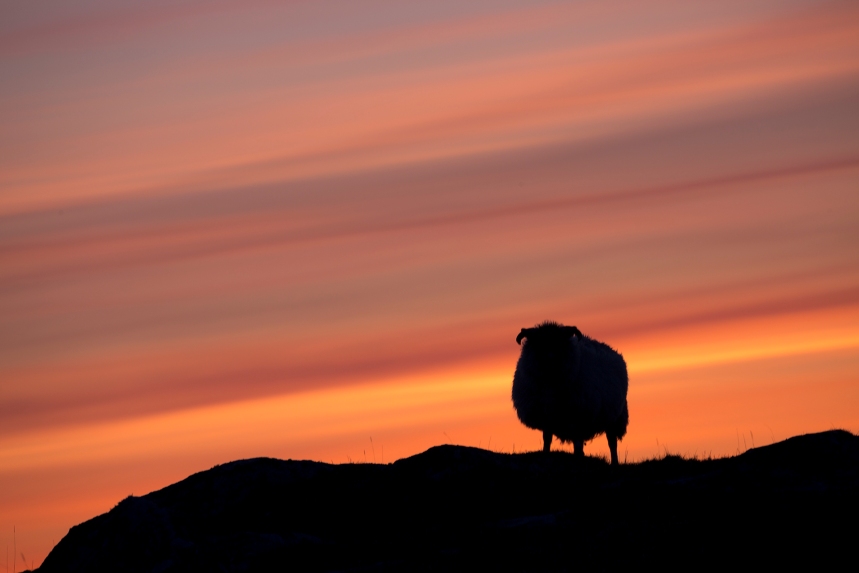

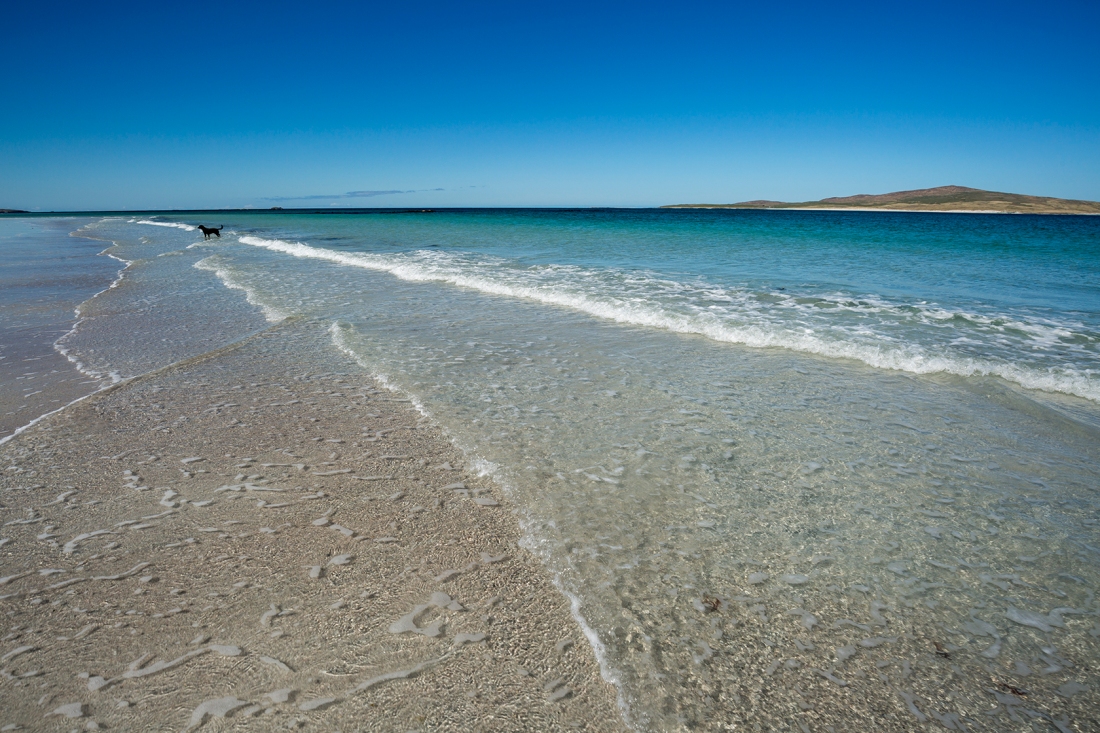
What a touchy and insprirational post. Thank you so much. I inspires me and gives me hope and strength. I love following your blog and admire you and your wonderful work. Please take care.
Love Ute
LikeLike
Reading about your recovery from illness touched me. Usually I’m not one to share my own experiences, but I like your blog and admire your beautiful work and the courage you’ve shown by sharing your story so here goes. In 1998, I was diagnosed with breast cancer. I was 45, and thought my life was over. After many months of treatment, much of it invasive and unpleasant, I was faced with living the rest of my life, however long it would be. Since then, I’ve been gifted with 3 grandchildren, a life of work, travel, love and friendship and now, freedom to spend as much time as I like on the people and things I love best (like knitting). I learned some very valuable lessons from my unhappy health crisis 20 years ago. These are – Celebrate every day and be thankful for blessing of time. Embrace the people and things you love and be open to love whenever and in whatever form it comes. Be kind to yourself and accept the beautiful person you are, even if you aren’t the person you expected to be. And really look at and marvel at the beauty of the world around you, whether it comes from designs and colors, music or art, an amazing landscape, or the color of your grandchild’s eyes. It’s a wonderful world – and we’re so lucky to be a part of it for however long we’re here and every birthday is a gift. Congratulations on your recovery, and here’s to a lovely life filled with beauty and love.
LikeLiked by 2 people
thankyou, Nancy. Here’s to your life, well lived! Cheers x
LikeLike
I so appreciate this post, as I do all your writing. I have loved your writing and work for years, but I have turned to it for inspiration especially in the last few months. I had a brain injury a year ago and I am still learning my limits and how to pace myself. Thank you for sharing your journey – it really helps.
LikeLiked by 1 person
Kate, What a beautiful look back on how your life has changed.
But, you’re still teaching, still researching. You’ve simply expanded to a worldwide audience. There’s not
many in academia who can say that. Don’t many continue, throughout their career, to write for a very
narrow audience?
You’re creatively reaching a much broader audience with your gifts.
This blog, and your business, isn’t just about knitting. You’re bringing much of your creative past and
talents forward. Yes from “here again” and much further.
xo
LikeLike
It’s all a journey, isn’t it? And you never quite know where or how you’re going to end up. Sometimes we realise this sooner rather than later, with more or less grace. We’ve so much to learn from each other.
Looking forward to your book. X
LikeLike
They found my cerebral aneurysm before it had time to even think about rupturing. When I think about what could have been makes me feel very grateful. In so many ways I can relate to your journey Kate. Blessings xxx
LikeLike
A well written and evocative post that struch a chord with me. I sustained a life changing spinal injury at work a few years ago. I’ve been lucky as four years of surgery ( and counting ) mean I am mobile again. I did however have to change my career pathway as an emergency nurse whose limbs don’t always do what they should is not especially usefull. The hardest thing for me was to accept that if I am to remain well for as long as possible I have to slow down on the days I am not at work. The upside is that I spend much more time knitting or sewing than I have for years. I am finally accepting that despite having to give up some things I loved, especially horse riding my life has just taken a new path, not necessarily better or worse, just different.
LikeLiked by 1 person
Marvellus landscape!
LikeLike
You are so beautiful.
The before and after can have so many different conotations in an individual experience. For me a loss of hearing has made the ‘before and after’ a challenging landscape, yet we persevere and there is always a friend in knitting.
LikeLike
Thank you so much, Kate, for your thoughtfulness and skill at writing down those thoughts. And for Tom’s exquisite photography to take you through your journey.
Your thoughts about bereavement for one’s body made me realize I’m going through a similar thing, though my body issues are different: early menopause and a diagnosis of epilepsy putting me on a drug that made me gain 40 lbs in six months, and then depression (runs in my family) putting me on other drugs to where I’m now 80 lbs past where I had been 20 years ago. So while my ‘before’ and ‘after’ were not stark, I still feel like the person of 80 lbs ago, and am frustrated that my feet, back, and cardiovascular system are not what they were then. It’s a very frightening experience, no matter how quickly or slowly it happens, wrenched away or slipping away is still ‘away’.
I just purchased your West Highland Way book and began to read it last night. I’m looking forward to ‘walking the ways
with you via your writing.
Thanks so much again,
Tamara
LikeLike
You are a brave soul and write so well about your experiences. This was especially touching to read and to understand your journey. I think it will resonate with people who are aging as well, who do not have the strength they had when they were younger. Thank you for sharing what’s in your heart – it helps many more . . .
LikeLike
Such a beautiful post Kate. You write so powerfully about adapting to life after your stroke and the photos are quite stunning. I recently returned to Iona (where I had once worked) after a 20 year interval during which I suffered a major bereavement by suicide. I found it a tremendously healing thing to do. Thank you yet again for the inspiration in life and craft x
LikeLike
Thank you for sharing such a personal reflection, and thank you Tom for these photos. You are my hero.
LikeLike
I love your writing. And the photos are gorgeous.
LikeLike
Dear Kate – I came across your blog back when it was still “needled” and have kept reading since then, inspired by your musings and your journey. Over a year and a half ago I sustained a concussion and while nowhere as life-altering as your stroke, it has created that demarcation of before and after for me as well. I have walked my own route if letting go of certain pursuits and even friends, and found a way back into the light. I take joy and hope from reading your blog, and wish you all the best as you move forward along your bright and creative path.
LikeLike
Ah yes–before and after; we learn to adapt, and treasure the NOW, as you have beautifully done. I too, have learned that today is what we have, and to make the most of it, as you are doing. Age, and a not-so-promising cancer diagnosis, have focused my attention on what I can do NOW: and I do all that I can. As an artist, I find your work, and creations, and photos and words are inspiring; keep on going; there is so much in this world to see, and do, and love.
Thanks for sharing with us. Blessed be,
Sandy
LikeLike
Thank you very much for sharing your inner thoughts and feelings with all of us on your journey back to a pleasant memory. Kate, you are an inspiration for all of us. Loved the scenery you explored with your loyal companion, Bruce and with Tom. Tom’s photos are always stellar. Your strength is incredible. Your acceptance of your disability has inspired you to explore your world and to most definitely stretch your wings. May you continue ti be strong…
LikeLike
Kate,
Hope you thoroughly enjoyed your time away and back again…..the pictures Tom takes of you and Bruce take me there as well. Thank you both for sharing these memories. I hope your recovery brings you new joys every day.
LikeLike
❤️
LikeLike
The photo of footsteps in the sand says it all to me. We go forward. Every day we wake we go forward. Thanks for sharing.
LikeLike
You are so strong. You are a hero to many. Thank you for your wise words.
LikeLike
I don’t usually comment, but this post left me with only one word: Celebrate.
It will all unroll differently than you think, but if you can find the one goodness in each day, which you do, repeatedly, then you are wealthy. I learn so much from you.
LikeLike
Dear Kate, all in this post was perfect. Any person could easily change the word “stroke” with cancer or, for me, with rare disease. I’d like to ask you if I could translate you post in my mother language that is Italian and link your original post on your blog and the translation on my blog. It’s a personal one. Less than 200 followers. Nothing special, but I’m sure many friends will really love and appreciate your message. You found the right words to describe deep emotions and feelings common for many people who suffered of illness. Please let me know if I can. Of course I will not link my blog here out of respect. Waiting for your kind reply I just want to say… thank-you.
LikeLike
THIS TOUCHED ME DEEPLY. I’M JUST BEGINNING THE JOURNEY OF FINDING MYSELF AMONGST THE DEBRIS OF 53 YEARS OF GIVING AND MYSELF TAKING THE BACKSEAT ON MY LIFE. MEDICAL ISSUES HAVE CHANGED ME AND WILL CONTINUE TO DO SO. YOUR GRACE IN DESCRIBING THE CHANGES BROUGHT TO YOU AND HOW YOU’VE ADAPTED THEM IS INSPIRING!
LikeLike
Hi Kate, thank you for sharing 🙏 Your blog, the history of different parts of the Highlands with of course the knitting and the beautiful photographs are just wonderful. Best wishes, Hilary
LikeLike
A poignant essay, well-done as usual. I offer that the ‘before’ doesn’t need to be something sudden and life threatening like your stroke. Age and deterioration cause me the same emotions. I look at my saddle, contemplating how to find its new owner as I downsize. I haven’t ridden in years but still mourn the days when I could.
Thank you for continuing to express what we cannot.
LikeLiked by 1 person
Oh Kate what a wonderful celebration of life before and after. I am dealing with the trauma of my body imploding upon itself. A horrible illness. I am so grateful to be able to kno2t and crochet and have used many of your designs. Tom seems such a wonderful supportive man. Cant wait to read yourr book.X a hug
LikeLike
Oh, Kate!
Thank you for this beautiful post! Your words & Tom’s photos are such perfect accompaniment for each other. You stir my heart & make it ache with the beauty & resilience this world & it’s beings have to offer & which you share with us so stunningly, no matter where in the world we happen to be. Thank you for connecting & sharing & being you. You are wonderful!
LikeLike
What beautiful and moving words, accompanied by such lovely photographs. You are such an inspiration to us.
LikeLike
Hi Kate,
I am a person who had a rare cancer which has given me a before and an after. I now have good energy days and not good energy days. Today I am having a not so good energy day – which made it a great day to read your blog post.
Thanks for the words; truly.
Wendy
LikeLiked by 2 people
Wendy, I am the wife of a rare cancer survivor. Like you, we deal with each day as it presents and like you all, we live with our new reality as best we can. My best wishes to to you.
LikeLike
Thank you for your kind words. My very best
to you and your partner as well!
LikeLike
you are incredible – such strength and courage… one of my inspirations!
LikeLike
What a beautiful blog post! I wish you, Tom and Bruce all the luck of the world! And what a extremely beautifull part of the world you live in!
LikeLike
I commend you on your journey into wellness. As I skim others comments I see a recurrent theme, of the limitations imposed by aging. I too have experienced the increased difficulty of doing things that seemed effortless in my younger days. But, no going back…only forward, and to the innovations that make knitting easier. Circular needles have been a Godsend, and now the little Addi flexiflips, neko, and interchangeable…life gets better.
LikeLiked by 1 person
You touched my heart with what you shared… thankyou for your generosity in letting us be part of your now❤️
LikeLike
Such a lovely place! I am glad you are able to enjoy it in a new way. Perhaps more observant, more personally than as something to be conquered?
LikeLike
Ouahou ! c’est merveilleux … quel lieu magnifique !
Des mots somptueux accompagnés de sourires et de larmes, … et des photos à couper le souffle.
Merci à tous les trois !
LikeLiked by 1 person
For all of us with one or more “before and after”s, thank you so much for sharing these inspiring thoughts and photos.
LikeLiked by 4 people
Thanks for you touching post. I have Stenosis of the spine and walk with a walker. Nothing like a stroke, but you have given me so much hope and I had to thank you for the years of knitting. I am knitting a baby blanket for a great grand Child, a few years into the future. I am looking forward to reading you book about your healing journey. Ann
Sent from my iPhonea
>
LikeLiked by 1 person
Wonderful photography and beautiful expression of your changed circumstances and ability to keep going.
LikeLike
Wow Kate!
Such powerful words at the end….. God bless you!
LikeLike
How apt to read this today, the anniversary of losing my eldest brother. My life is in terms of before his death and after. I didn’t realise grief could be so physically as well as mentally debilitating, made worse by my dearest mam not surviving losing one of her children. But a good side effect is that, like your own observation, things are intsense in another way and enjoyed all the same. I see and wonder now not just at nature itself but every bug and leaf. I’m normally quite a private person but reading your heartfelt post has given me the courage to share with like minded people. Thank you for this opportunity and keep them coming – they mean so much to us!
LikeLiked by 1 person
I so look forward to these beautiful blogs-a clumsy word for the personal reflections and visual beauty they contain. Please take care of yourself.
LikeLike
This is such a beautiful post. I have forwarded it to a few friends for inspiration.
LikeLike
How eloquent! You see such beauty and share it, wonderfully, with us. Thank you.
LikeLike
Living in the now – a very beautiful place to be. Tears of joy flooded my being while reading your post. Thank you Kate.
Thank you Tom for those glorious photos!!!
LikeLike
Thanks for this post. Two reasons. One, I am also grieving a former physical self, though not to the degree that a stroke would impose. Two, in doing the genealogy of my family, I have found an ancestor from Northton. Thanks for giving me a glimpse of this beautiful place.
LikeLike
Your thoughts on your pre- and post-stroke life were very interesting. You have accomplished a lot in these years since. The pictures of you striding along the beach with Bruce, but no staff, was very positive and uplifting to see. Have you thought, though, that there is another before and after coming soon? Aging will soon bring other accommodations. You will look back and see all the things you did at 40, 50, 60 and on, and see the before and after in the tasks you try to do. I experienced this just yesterday as I was digging a new garden. My husband tilled up just two 12-foot strips out of the lawn, and then I got down on my hands and knees to clear things up and rake the soil smooth. I am 70 this year, and I was doing much the same at another house at age 50. It was much easier then. So you deal with post-stroke things now, but be prepared to begin to deal with aging things soon. Much luck to you, Kate. Thank you for sharing your life with us.
LikeLiked by 1 person
Sometimes one wants to rage against the seeming cruelties of fate, but as I have aged and become increasingly decrepit I have realised that it can be so much more fulfilling to be philosophical. I too can no longer stride over hills, nor leap rocks, but so delight in the close at hand, and still breathe the atmosphere, the landscape, the life of a place. You strke me very much as someone who makes the most of situations – thank you for continuing to share it all.
LikeLiked by 1 person
So eloquent and so well written, your words really touched me. I am very thankful that knitting continues in your life and that you are such a strong creative person. Keep up the great work!
LikeLike
You’re my heroine. Keep capable (Kate-able) and carry on.
LikeLiked by 3 people
I totally agree with your thoughts on the before and after. In any trauma whether physical or something else there is that visualization of oneself as the before person and the after person, how that has changed your life and you. There is a lot of letting go, some things you would rather of kept, like your health, but other things you come to realize are just not important, you view life through a new lens. I’m glad your trip was so beautiful.
LikeLiked by 2 people
Dear Kate, I smiled with recognition when I read your comments on the attentive that becomes required. Will Tom be posting any of these pictures in the gallery for purchase? I would love to have one to remind me.
Best, Pam
LikeLike
Thank you for sharing your insights. Connecting to nature and reconnecting with old friends is uplifting and healing for the body and the soul. All the best to you, Tom, and Bruce.
LikeLiked by 1 person
Bless you Kate ….and Tom and Bruce. You bring inspiration and joy.
LikeLiked by 3 people
A lovely, thought provoking piece Kate. I am so glad you returned to such a beautiful place and enjoyed the experience..
Sue
LikeLiked by 1 person
I have a before and after self as well and I always have to adapt to what my body is telling me it is able to cope with at any given time. Thank you for sharing how it felt going back to the islands as the person you are today! Good days, in whatever form they come, are the ones to treasure.
LikeLike
Yes, that was so uplifting. Thank you so much for writing this. I will remember it for a long time.
LikeLiked by 2 people
This is beautiful. Thank you for all of it.
Maggie
LikeLike
May you continue to find peace with each day.
Thank you for sharing this special place and your inner journey as well. Photographs are stunning!
LikeLike
This is resonating so deeply with me, you always life me up xoxo
LikeLiked by 1 person
So glad the trip was a positive and uplifting experience for you Kate!!
Stunning photography.
LikeLiked by 1 person
I’ve just finished my 8th round of chemotherapy, after not eating for 2 days, this morning I woke up hungry and to you. Thank you.
LikeLiked by 3 people
Kate, I am dealing with a before and after too, following the sudden death of my husband Ali in November: https://applecrosslifeblog.wordpress.com/2017/11/
Your writing is both moving and helpful, making the most of all the positive things that have happened that would not have done so otherwise. I am making big changes in my life at the moment and hope that in time to come I can reflect on this time of change as positively as you do now.
LikeLiked by 4 people
Alison, I have taken a long peek at Ali’s blog. I thank you for sharing it. Many decades ago my family suffered a loss in the wilderness in the way of my uncle, who was an artistic and well-written young man. To this day he has not been found & although I was born almost three decades after his disappearance I keenly feel his loss & wish I could have known him. Ali will have descendants among all family branches who will feel the same as I. I am grateful that in my case & in the case of Ali’s descendants that a body of beautiful art & words have been left behind, by which we can know & love them. My condolences on the loss of your beloved Ali.❤️
LikeLiked by 2 people
Thankyou MerChele. Kate’s whole post made me think of him; his grandfather moved to Applecross from Harris as a little boy, the pile of creels the same as he had used for forty years, the photographs so very much like the scenes and details he used to record with his camera.
LikeLiked by 3 people
I was very moved by the final blog post on the Celebration of Life for your husband Ali. I am so sorry for your loss.
LikeLiked by 2 people
What a terrific and special person Ali obviously was, Alison. I’m so very sorry for your loss. Bon courage to you for the times and changes to come. x
LikeLiked by 2 people
Dear Alison, My heart missed a beat when I saw your name here. It’s so fitting. I loved Ali’s blog. I wish you all the best and send love to you from far away.
LikeLiked by 1 person
A wonderful, uplifting piece Kate.
LikeLiked by 1 person
Thank you so much for your inspiring and moving comments –
sharing so many helpful insights into your unique and personal journey with change and loss and bereavement –
Do we sometimes find more for having less?
LikeLiked by 2 people
You brought tears to my eyes and Tom’s photos likewise. I’ve been exiled in England for 35 years and our house is now on the market. I’m coming home. Your words make me want it even more!
LikeLiked by 2 people